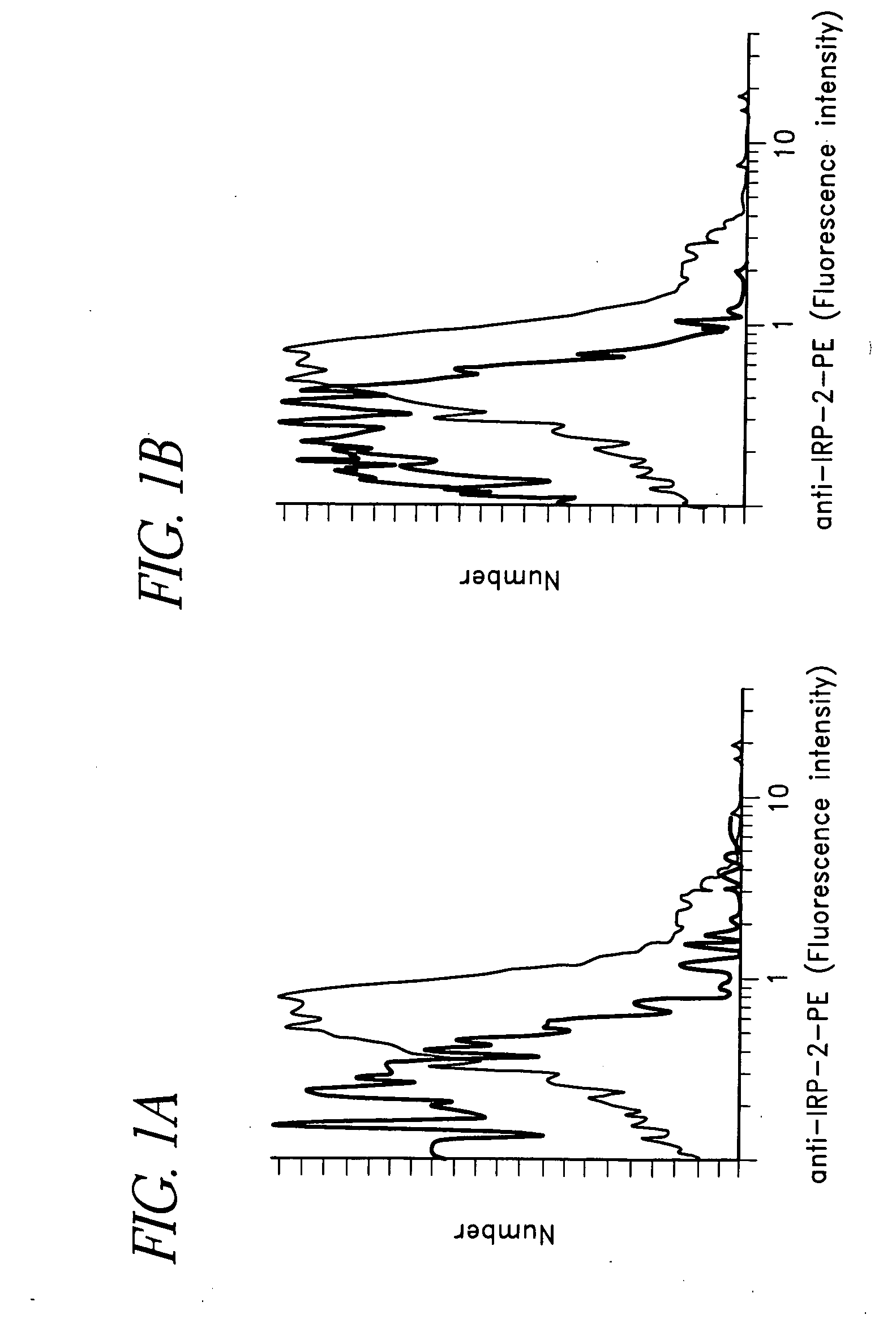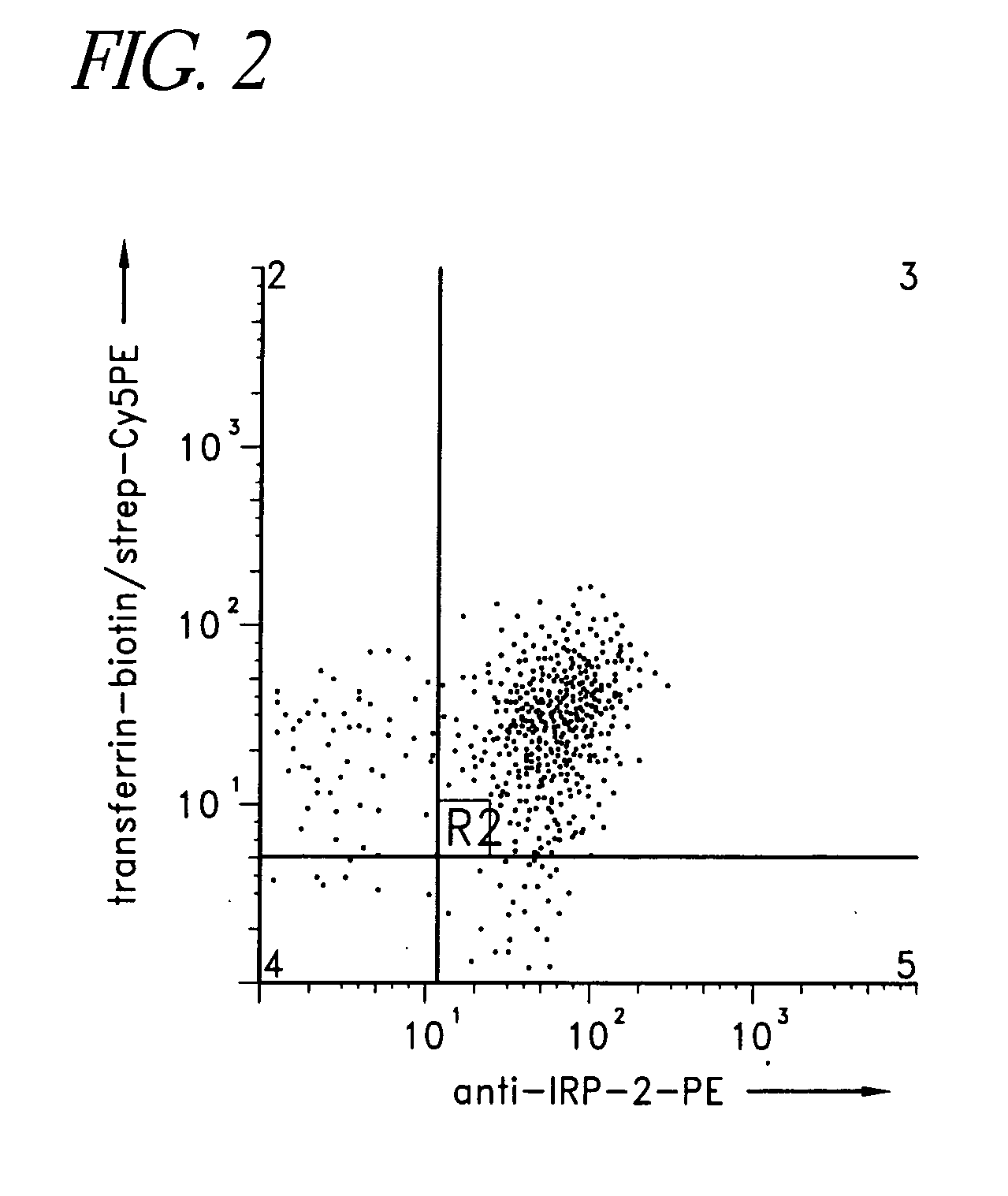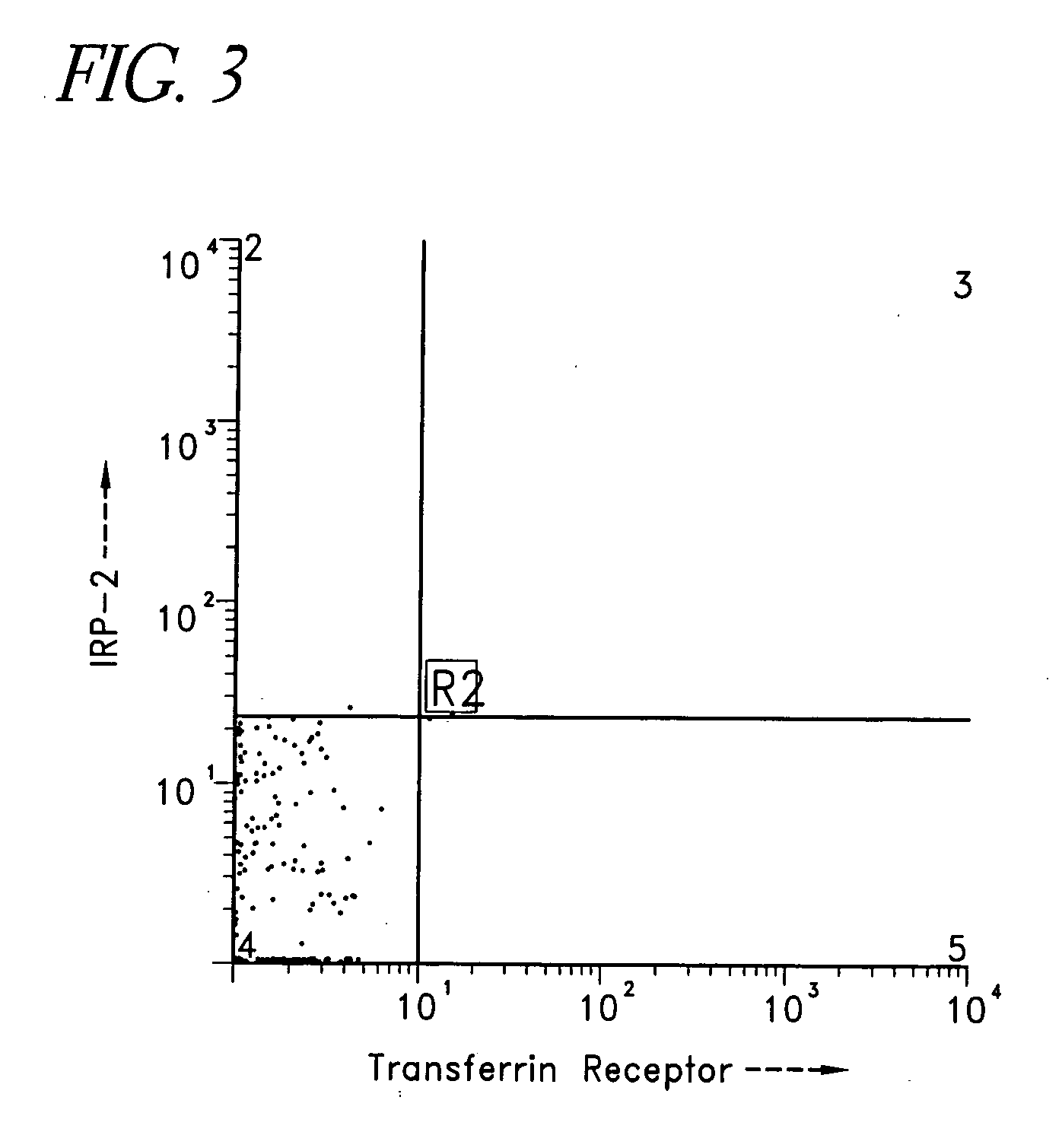Negative correlation between IRP-2 and Transferrin receptor expression as a diagnostic of Alzheimer's disease
- Summary
- Abstract
- Description
- Claims
- Application Information
AI Technical Summary
Benefits of technology
Problems solved by technology
Method used
Image
Examples
embodiments
Diagnostic Embodiments
[0222] Generally, the diagnostic embodiments can be classified according to whether it is a nucleic acid or protein-based assay. Some diagnostic assays detect the level of expression of IRP-2 nucleic acids or proteins and / or Transferrin receptor nucleic acids or proteins, which contribute to aberrant iron regulation in the cells or tissues. This can be contrasted or correlated with the expression in wildtype or normal cells and further, compared to other diseased cells, such as tumor. Of particular interest might be cells which have aberrant cellular metabolism, such as tumor cells in which the metabolism is highly up-regulated. Other diagnostic assays identify and distinguish defects in iron metabolism by detecting a level of mutant and / or wild type IRP-2 RNA or protein and / or Transferrin receptor RNA or protein in a tested organism. These can resemble the level of mutant and / or wild type IRP-2 RNA or protein and / or Transferrin receptor RNA or protein in a org...
example 1
Preparation of Antibodies Specific for IRP-2 Peptides
[0260] Antibodies specific for oxidized and reduced forms of wild type and mutant IRP-2 peptides were prepared as follows. Seven clones having one or more cysteine residues in the peptide loop of amino acid residues 138-216 of IRP-2 substituted with alanine were created by conventional techniques in molecular biology. The “C1A” clone has a substitution of the first cysteine proximal to the N-terminus with an alanine. (SEQ. ID. No. 4). The “C2A” clone has a substitution of the second cysteine proximal to the N-terminus with an alanine. (SEQ. ID. No. 6). The “C3A” clone has a substitution of the third cysteine proximal to the N-terminus with an alanine. (SEQ. ID. No. 8). The “C12A” clone has substitutions of the first and second cysteines proximal to the N-terminus with an alanine. (SEQ. ID. No. 10). The “C23A” clone has substitutions of the second and third cysteines proximal to the N-terminus with an alanine. (SEQ. ID. No. 12). T...
example 2
Antibodies Specific for IRP-2
[0262] In this example, an approach that was used to make and screen an antibody specific for IRP-2 is provided. To make the antibody, Balb / c mice were immunized with a 63-residue (wild type) “loop-peptide”, in RIBI Adjuvant (Corixa) following the manufacturers protocol. Splenocytes from the mice were then fused to Sp2 / 0 myeloma cells using standard hybridoma techniques. The resulting hybridomas were screened for reactivity with the loop peptide, as well as the whole molecule. Six clones were positive by ELISA (native molecule) and Western Blot (denatured molecule). One of these (4G11) was selected for large scale antibody production, based on it's growth characteristics and strong assay results.
[0263] Competitive binding assays were then conducted between 4G11 and the other 5 clones, to determine whether they recognized the same or different epitopes. Only one (14F7) did not significantly inhibit the binding of 4G11, and is assumed to bind at a differ...
PUM
| Property | Measurement | Unit |
|---|---|---|
| Fraction | aaaaa | aaaaa |
| Ratio | aaaaa | aaaaa |
| Level | aaaaa | aaaaa |
Abstract
Description
Claims
Application Information
 Login to View More
Login to View More - R&D
- Intellectual Property
- Life Sciences
- Materials
- Tech Scout
- Unparalleled Data Quality
- Higher Quality Content
- 60% Fewer Hallucinations
Browse by: Latest US Patents, China's latest patents, Technical Efficacy Thesaurus, Application Domain, Technology Topic, Popular Technical Reports.
© 2025 PatSnap. All rights reserved.Legal|Privacy policy|Modern Slavery Act Transparency Statement|Sitemap|About US| Contact US: help@patsnap.com



